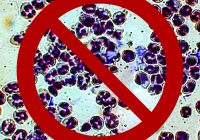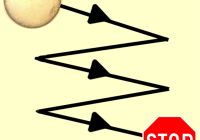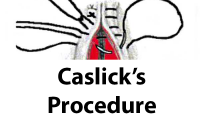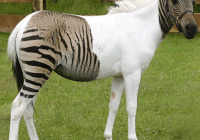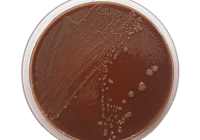Preparing the Uterine Cytology Slide – Pre-breeding diagnostics should include the simple, rapid and easy-to-perform uterine cytology slide, which takes only about 15 minutes By Jos Mottershead & Kathy St. Martin A very useful, rapid and easy first step diagnostic prior to breeding a mare is to prepare and read a uterine cytology slide. Minimal equipment is required,… Read More »
Dead Sperm Do Not Cause Greater Uterine Immune Response! We know that sperm are the primary instigator for initiating the mare’s post-breeding uterine inflammatory response[1], but one not infrequently hears commentary to the effect of concerns that there may be a greater response if the insemination dose contains a higher number of dead sperm. Cousseau et al have… Read More »
Obese Mares Have More Problems Than We Thought! It has been previously documented that obese mares have a higher tendency towards early embryonic death, particularly in hot weather and this has been put down to the core temperature of these mare potentially being higher than other mares, with a negative impact on embryo survival[1]. At ISER XIII Meikle… Read More »
ISER XIII “Snippets” – Held in Brazil in August 2023, ISER XIII produced a variety of useful research with immediate clinical value, here we review some of the presentations The thirteenth International Symposium on Equine Reproduction (ISER XIII) was held in Foz do Iguaçu, Brazil between July 10th–14th, 2023. Around 400 veterinarians, researchers and animal scientists were present,… Read More »
Cessation of migration (fixation) of the embryonic vesicle – Is cessation of migration (fixation) of the embryonic vesicle inextricably linked to days 15-17 of pregnancy? By Professor John Newcombe, BVetMed, MRCVS Is cessation of migration (fixation) of the embryonic vesicle inextricably linked to days 15-17 of pregnancy? Introduction The ability of the embryo to signal to the endometrium… Read More »
When lecturing on equine reproduction our lead lecturer Jos Mottershead often comments that there are several words to lose in order to avoid confusion and – plainly – being incorrect. The words he always cites are “never” and “always”, because the moment that one uses those words, invariably someone in the audience comes up with a situation which… Read More »
Evidence that embryo migration (translocation) is not always if ever, necessary for the successful signalling or reception of the Maternal Recognition of Pregnancy (MRP) in the mare – Long thought to be connected, embryo migration and maternal recognition may not be so closely related after all. By Professor John Newcombe, BVetMed, MRCVS A Case Study By tracking the… Read More »
Vulval Conformation, Common Vulval Injuries and the Caslick’s Procedure – Vulval Conformation and the Caslick’s Procedure are important aspects to consider, especially when breeding older multiparous mares By Jonathan F Pycock, BVetMed, PhD, DESM, MRCVS, RCVS Specialist in Equine Reproduction In the normal mare the vulva provides the first effective barrier to protect the uterus from ascending infection.… Read More »
The Ethics of Breeding – More than a popularity contest – This older article discussing horse breeding ethics, while written many years ago still holds true today and is worthy of consideration By Jos Mottershead Printed in: Atlantic Horse and Pony, February 1990: “She’s not grown as much as I thought she would”. How many times have people… Read More »
Contagious Equine Metritis (CEM) – A notifiable disease, Contagious Equine Metritis poses a significant threat for domestic breeders and international trade. By Jos Mottershead and Kathy St. Martin History In the spring of 1977 a previously unidentified genital infection of the equine was observed in the United Kingdom and Ireland in Thoroughbreds. Mares were being found not pregnant… Read More »



